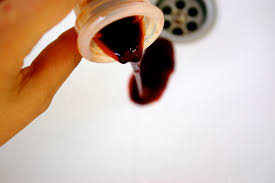We've all seen the acronym 'DINK' (Double Income, No Kids) but the other day I saw someone post 'TINK"s - now they meant Two Incomes, No Kids, but it got me thinking - how great would it be to have Triple Incomes pushing towards your financial independence goal!
This thought lasted about five minutes before something else caught my attention, but then a couple of weeks later I was watching "You Can't Ask That" on ABC iView and they had a segment devoted to Polyamorous people and their partners.
Which got me thinking again, and the idea has been bubbling in the back of my brain: Is Polyamory the trick to retiring early?
In '
You Can't Ask That' one of the Thruples was asked "Do you ever worry about losing your spot on the team" and one of them replied (with a laugh) "Of course not, you couldn't pay the bills without me". While they don't delve deeply into their financials I am infinitely curious. However a (very brief) googling hasn't turned up any gold in the polyamorous-finance blog space, probably because of the time committment in having multiple partners.
Thus, with absolutely no solid information (save a brief unsuccessful open relationship as a youngster that ended when I met Mr. FIRE) I need to point out that this post is entirely speculative. As thought experiments go I've found it rather interesting, although I anticipate this being my first post with an angry comment, probably using the phrase 'morally bankrupt'.
Anywho, here we go.
Dating
Firstly, dating is expensive. And being Poly means a lot more dating. When Mr. FIRE and I were dating we went out for dinner (once, that was boring... still, it's the thing you do) we went to the movies to see the
Hunger Games, which ended in sitting on my car boot talking for an hour, and oddly - we took up an 8 week parkour course together.
By the end of this we knew each other well enough that dates were largely visiting each others house (okay, his house. I lived with my parents, how embarrassing!) and a lot of,
ahem, Netflix and 'chill'.. or whatever it was called before Netflix. We went hiking a lot, frequented chocolate cafes like San Churros and played board games. I once threw a Monopoly board at him.
In the first couple of months of our dating I'd say we spent a couple of hundred dollars each, and most of that was on the parkour classes. However, this is definitely not typical dating. For an accurate pricing, let's look at a couple of cliche' date ideas and their costs, plus one not so cliche' excellent idea.
For the sake of argument, and because I'm a child of the modern age, let's assume that you and your date are going to split the cost evenly.
Dinner and a movie
Firstly, this is a terrible idea for a date. Dinner will be spent making awkward conversation, and then you have to sit silently next to each other in a dark room for two hours. Creepy, and uncomfortable. If you have to do the cliche' dinner and movie date, flip it around and see the movie first. You can get in for an earlier (hopefully cheaper) session, and then talk about the movie over dinner.
Cost: $15 each for a movie, $10 at the snack bar, and $30 each for dinner. Plus $5 each for some kind of dessert either at the restaurant, or after. Total: $60 each
Coffee by the beach to watch the sun set
I'm writing this post in winter, but I think we can all agree this is a summer date. While the beach can be gorgeous and empty during winter, nothing cuts a date short faster than icy winds and unexpected downpours. The beach is always a win for dates because you get to see your new heart-throb out in the sunlight, have a swim, have a walk, eat some ice-cream and either lounge around or play beach sports as suits you. Plus it's reasonably cheap.
Costs: $5 for a coffee, $5 each for the fish and chips your will inevitably get a craving for, and another $2 for an ice-cream on a hot day. Total: $12
Archery and lunch

Finally, the kind of date Mr. FIRE and I would actually go on! If we were bringing a third into our house this is the kind of date they would have to love. There is a self-paced archery course in the hills where a nice lady will give you a ten minute crash course, then sends you out to follow a trail through the woods shooting three arrows at each target. The whole course takes about two hours (including lost arrow time... oops) and prevents any awkwardness because you're focused on learning a new skill and spotting the next target. Lunch is picked up from a country bakery on the way home because by that time, you're a wee bit peckish.
Cost: $15 each for archery (plus $3 per lost arrow, ask me how I know that...) and $10 for bakery goods and coffee. Total: $25
Dating costs
Let's be honest here, Poly dating is likely to be just as expensive as regular dating. The only difference will be that you're going on more dates since you'll be scheduling in more than one partner. Depending on your flavour of Polyamory you might be going on group dates, or seeing one partner one night, and the other the next. Either way, dating starts out pretty pricey - two dates a week averages almost $50, and I picked some cheap dating ideas.
Moving in to one house
Fast forward a few months and you and your Poly partner(s) are ready to move in together! Just like when a couple moves in together you probably have too much furniture and more TVs than you could ever possibly need. You'll probably pull in a quick bit off cash selling off the extra TV's and the smallest couch - or maybe you're garage will be full for months of things you don't want or need.
Of course, there is a third option where you pay for a storage space, but this is a finance blog so I'm not recommending that. I'm frowning sternly at the concept.
Moving three people in together has advantages over moving two in together - you only need one fridge, one TV, one washing machine, so you can sell off all the extras.
However, you need space for three people. Mr. FIRE and I live in a snug 'two-bedroom' house, which is really one-bedroom and a study. The study couldn't comfortably fit a bed and a wardrobe, but it does nicely fit our computer desks. If we had a third person we would need to strongly contemplate moving into a bigger place, and paying more rent. On average an extra bedroom in our suburb would cost an extra $80 a week. Mr. FIRE and I currently pay $150 a week each towards the mortgage, so moving somewhere bigger but adding a third person would actually save us $25 a week each.
Savings: $25 a week less in rent, plus a short term boost of approximately $2,500 as we sold off excess appliances and furniture.
Living together - the long term
The happy time of all living together! We've already covered that three people are paying one rental bill / mortgage, but we are also only paying one set of utility bills! The water bill would be the happiest change - currently we pay over $150 for usage and a measly $40 for usage. Assuming having a third person in the house means 50% more usage, then our quarterly bills would go from $190 to $210. Rather than $95each, we would be paying $70.
Let's dig further. Our utilities also include gas and electricity. I doubt these would go up by 50% by having another person in the house because a lot of the usage is communal - having lights on, cooking dinner, running the fridge. Let's be generous and say it goes up by 30% to account for an extra load of washing each week and maybe a bigger fridge.
Based on our last set of quarterly bills, our gas would go from $144 to $168, and electricity from $276 to $370. Our individual split was previous $72 and $138, now it's $56 and $123.
Lastly, the internet. We pay $60 a month for unlimited data. We wouldn't need to upgrade our plan, so what was $30each a month is now $20 each.
On utilities we're saving almost $100 a quarter. Not a massive amount, but also nothing to sneeze at
Food shopping is the third biggest expense for most Australia, and now we can shop in bulk, and bulk buying is always cheaper. We also wouldn't have to worry so much about wasted food, so let's say we can knock $20 each off our monthly food budget (10% off).
Total savings: $160 a quarter.
Money in!
While I've been focusing on expenses and savings, there is one more very important thing to consider - this is a triple income household. If we assume our mythical third person is making an average wage of $60,000 with expenses similar to mine they would be bringing an extra $24,000 into our household savings - after tax.
Adding their $24,000 savings to
my goal of $28,000 in a year means as a household we've almost doubled our savings (I would include Mr. FIRE here, but he still can't tell me his savings rate...). This is assuming that they have the same expenses as I currently do.
As I've worked through above those, we can expect a 10% reduction in groceries ($20), and roughly 30% off of our utilities ($28). Plus another 15% off rental expenses ($25). This would drop my monthly expenses from $1833 (excluding my rental property) to something closer to $1750.
So not only do we bring an extra $60,000 income into the household, we reduce our expenses, which reduces our FIRE number, and increase our savings.
Assuming two people in my house, earning $70,000 each and spending $25,000, we could save $90,000 a year. With a combined expenditure of $50,000 we would be ready to retire in ten years.
Assuming three people in my house, spending and earning the same way, we could save $135,000 a year - with our 'bulk discount' lifestyle let's round that up to $140,000. With a combined expenditure of $70,000 we would be ready to retire in eight and a half years.
While eighteen months isn't a massive reduction in costs, there's also all the incidental benefits to consider. Three people sharing the cooking, cleaning and yard work. Three people around means there are always enough people for
board games. Plus with different work and hobby schedules, hopefully there would always be someone around for a cuddle on a cold winter night.
What about bad things?
Well, firstly, bad things like broken dishwashers, car crashes and random medical emergencies would be less terrible with all the costs split three ways instead of two.
But what about when you stop wanting to split things three ways? What about a divorce, or a break-up? If they're messy with two people involved, imagine the mess with a third. With
one in three marriage ending in divorce.
Divorces are financially devastating as couple split assets, sell off houses, fight over fridges and pets. With a third person do the assets get split three ways? Do more things disappear in the night as scorned lovers try and take what they treasure before you can hide it from them? Do you statistically increase the likelihood of coming home to find all your clothes in garbage bags on the front lawn?
Probably yes.
What do you think? Would a third person in your FIRE journey speed up the process? Should you just get a housemate instead?
































